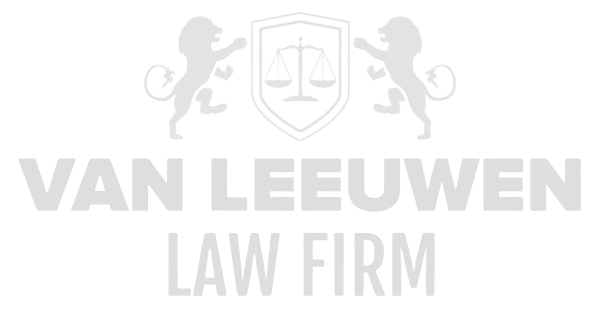Effective privacy protection forms the foundation of every digital operation in which personal data is processed. From the concept phase to launch, privacy-by-design and privacy-by-default principles must consistently be integrated into architecture, development pipelines, and management processes. This means that every decision—from data model structure to third-party integrations—is weighed for potential privacy risks, with the goal of minimizing data exposure and ensuring compliance with legal principles such as purpose limitation, data minimization, and storage limitation. Only by designing privacy from the start can costly retrofitting measures and severe fines be avoided.
At the same time, a robust privacy and incident management framework requires organizations not only to proactively manage risks but also to respond adequately when unforeseen events occur. In practice, this means that technical teams, compliance professionals, and legal departments must operate in coordination, supported by documented guidelines, simulation exercises, and integrated tools such as SIEM systems and case management platforms. Through constant dialogue and streamlined procedures, a culture is created where privacy protection is a continuity factor, not just a one-time compliance exercise.
Privacy Governance and Policy Hierarchy
An effective privacy program begins with a layered governance architecture in which strategic, tactical, and operational frameworks reinforce each other. At the board level, clear mandates and KPIs should be established, such as the timely completion of DPIAs or the percentage of employees trained in privacy awareness, fostering integration into the organizational culture. Privacy officers and compliance committees ensure that policies are updated in response to legislative changes or incident outcomes.
Operational teams translate these strategic objectives into concrete procedures and work instructions. Documents such as privacy handbooks, standard operating procedures (SOPs) for data processing, and checklists for new projects provide guidance and ensure consistency. For changes in systems or processes, change control boards are established that include privacy experts, ensuring that each change is assessed for its privacy impact.
The tactical layer, consisting of project managers and data stewards, ensures the implementation and adherence to policy. Periodic governance reviews monitor effectiveness, with management reports revealing hidden risks and opportunities for optimization. These progress reports form the basis for strategic adjustments and investments in tools or training.
Data Protection Impact Assessments (DPIAs)
For large-scale or innovative data processing—such as big data analysis, biometric authentication, or profiling for marketing purposes—a DPIA is legally required. These impact assessments consist of a step-by-step method: an initial description of processing purposes, identification of risk factors for data subjects, evaluation of existing safeguards, and design of additional mitigation measures.
Each DPIA concludes with a comprehensive report detailing chosen controls—such as strong pseudonymization, access control with least privilege, and end-to-end encryption. This report serves as tangible evidence of accountability to regulators and contributes to ongoing risk management. Additionally, DPIAs are reviewed annually or updated when significant process changes occur.
An essential component of DPIAs is consulting with relevant parties (where possible) and privacy experts. Feedback loops with external advisors or data protection officers (DPOs) ensure critical review of assumptions and broaden the perspective on potential unintended privacy effects.
Processor Agreements and Joint Controller Structures
When personal data is shared for external processing, processor agreements under Article 28 GDPR are indispensable. These contracts specify technical requirements—such as ISO 27001 compliance, encryption standards, and periodic penetration testing—and organizational measures, such as incident reporting within 24 hours and confidentiality by subcontractors.
In more complex scenarios, such as hybrid data ecosystems or joint technology development, joint controller agreements are required. These arrangements divide responsibilities for information provision, request handling, and liability in case of violations. Legal clauses specify who the primary point of contact is for data subjects and how coordination occurs in case of a data breach notification.
Contractual exit and transfer clauses ensure that when a partnership ends, all personal data is safely returned or destroyed. Such “data repatriation” mechanisms include timelines, formats, and destruction reports to ensure business continuity and prevent future risks from unauthorized retention.
Incident Management Procedures
An effective response to data breaches and privacy incidents requires a clearly defined incident management framework. Upon detection, an incident response workflow is automatically initiated, outlined in a playbook that includes steps such as containing the attack vector, forensic logging, risk assessment, and escalation to the crisis team.
Within 72 hours of confirming a data breach, notification must be made to the Data Protection Authority, including all required details: the nature and extent of the breach, affected permissions, actions taken, and an assessment of the consequences for the individuals involved. Additionally, communication plans are activated to send informed letters or emails to affected parties, with mitigation instructions.
After the acute phase, a thorough post-incident review follows: technical teams analyze root causes and implement patch or recovery measures. Compliance teams document lessons learned, update SOPs, and train involved employees, ensuring that future incidents can be managed more quickly and effectively.
Continuous Monitoring and Audits
Continuous monitoring uses SIEM systems, intrusion detection and prevention (IDP), and security orchestration, automation, and response (SOAR) platforms to detect anomalous behavior in real time. Logs from networks, endpoints, and applications are aggregated and enriched with threat intelligence, automatically generating alerts that lead to prioritized investigation tickets.
Periodic compliance audits—internally conducted and occasionally verified by external auditors—assess process compliance, technical configurations, and documentation standards. Audit findings are structured into remedial action plans with assigned owners, milestones, and KPIs for recovery. Legal review of audit reports results in policy adjustments and contractual revisions.
Governance committees receive quarterly reports with metrics such as ‘Mean Time to Detect,’ ‘Percentage of Successful DPIA Reviews,’ and ‘Number of Unavoidable Legal Violations.’ These insights support strategic decisions about investing in new tools, expanding the privacy team, or retraining developers and administrators.














